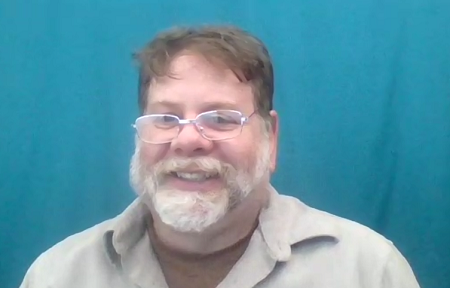We Ask Mark Annett, “What is Side Hustle University?”
Recently, Mark Annett, a long-time member of the New Jersey tech and entrepreneurship community, sat down with NJTechWeekly.com to talk about “Side Hustle University.”
Annett, who has started many companies on his own and with other entrepreneurs as part of Annett Enterprises (Livingston), is a patent agent who now works under contract for NJIT’s Martin Tuchman School of Management.
Side Hustle University is sponsored by the Martin Tuchman School of Management and supported by Synchrony, a financial services company in Stamford, Connecticut. It is based on the free e-book “The Side Hustle: How to Turn Your Spare Time Into $1000 a Month or More,” by Nick Loper, on Loper’s weekly “Side Hustle Show” podcast series and on the lean business methodology.
Annett noted that the group is for those who want some financial freedom. After all, he said, who couldn’t use an extra $1,000 per month! The program is free, but you won’t find any get-rich-quick schemes here. Instead, because this is Side Hustle University, the group teaches the skills needed to turn a side hustle into a business. It is a method of growing a business from a few customers to thousands by learning from and growing with your customers.
During the sessions, members of the community learn the art of side hustling, participate in the Side Hustle University accelerator, and then join Side Hustle Mastermind groups.
In Response to a Changing Startup World
The startup world is changing, Annett told us. Gone are the days when an entrepreneur with an idea could go to a Lean Startup weekend and build a company just from that. “You have to be what I call a two-tier startup. Entrepreneurs who can’t afford to quit their jobs and devote full time to their startup need to build up by hustling.”
While beginning a side hustle is a beautiful way to start an entrepreneurial journey, a side hustle doesn’t happen overnight, Annett said. “I tell people that I’m being totally honest with them. If you’re willing to commit two years to a side hustle, then there’s a good chance you can leave your day job.”
“The other reason that I’m teaching side hustling, he said, “is quite frankly because 40 percent of the population can’t afford a $400 car repair bill right now. It’s that population that I really want to help. So, if you can get an extra $500 or $1,000 a month, it will make a huge difference in your life.”
The program starts with an introductory workshop, where Annett acts as the participants’ cheerleader. “I’m telling them that they can do it and how we will proceed. They learn how they can think about the skills they already have and how they can start and monetize a business based around their interest and skills, and the intersection of their network. And that’s one of eight different models that I’m teaching them in terms of how to do it.”
Then there is a two-day weekend workshop where the “rubber meets the road,” he said. “During that workshop students are taught the actual skills that they need to begin, such as how to create a website, how to set the website up for Google organic search, how to structure it. … I teach them stuff that they wouldn’t know without somebody showing them. They get to learn tools they can use to see how people are actually doing keyword searching and learn how to create an audience. I’m trying to teach them action, how to use products that will help them create a product-based business, a service-based business or an audience-based business.” By the end of the workshop, the students have the skills to start.
Visualizing What Success Looks Like
After they graduate, they get access to a Mastermind group where they can exchange ideas and learn to ask each other essential questions such as “What will success look like to you?” as they create their goals. Annett explained that anyone can create a goal, but if they can also visualize what success will look like when they reach that goal, they have an advantage. “They can’t just say they are going out to talk to three customers,” they have to decide what it means to them to have talked to those customers, and what they are looking to get back from the experience of talking to them.
Annett noted that the first Mastermind group he created was scheduled to last just a few minutes, but lasted three-and-a-half hours, as the entrepreneurs started discussions among themselves, helping each other clarify their business objectives. The group is ongoing, with the budding entrepreneurs getting together monthly to support each other.
Through cross-programming with several other meetup groups under the Side Hustle University umbrella, Annett has run 15 workshops, reaching a total of 220 people. While not everyone registers for the complete program, Annett reported that more than 50 percent of those who do register for the complete program see it through to the end.


